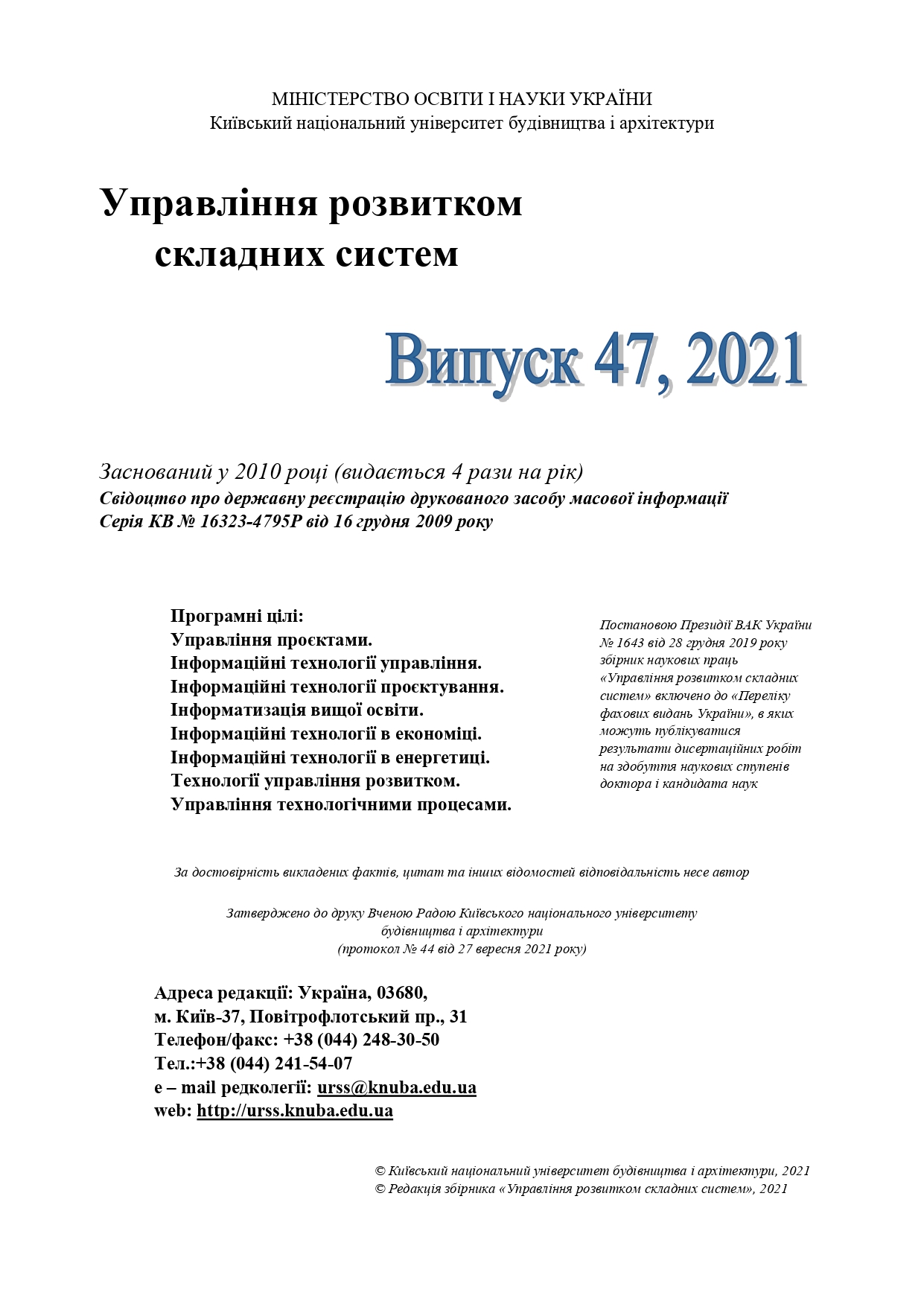DEVELOPMENT OF FUZZY MODELS FOR THE STUDY OF SUBJECTIVE ASSESSMENT OF COMFORT IN THE SCILAB ENVIRONMENT
DOI:
https://doi.org/10.32347/2412-9933.2021.47.162-166Ключові слова:
Hierarchy of influencing factors, comfort, fuzzy sets, linguistic variables, termsАнотація
The current state of construction and design of an apartment building in terms of comfort does not cover all the necessary aspects for the residence of future residents. Quantitative criteria are usually used, an excessive number of which, unfortunately, cannot improve the substance of the case between all the actors involved. This paper discusses the method of fuzzy description of uncertainty to assess the comfort of an apartment building using software products to find results over fuzzy values. A comparative analysis of quantitative and qualitative indicators of comfort, which are determined in conditions of uncertainty, which makes it difficult to make the optimal decision. Therefore, when evaluating all the influencing factors that affect the comfort of housing, it is proposed to apply fuzzy logic and choose a function that at certain input parameters corresponds to the representation of formalized terms in the study of membership functions. The theory of fuzzy logic makes it possible to reflect various methods of constructing fuzzy sets for the needs of the subject research described below. Fuzzy set theory is used to describe the comfort of an apartment building by calculating fuzzy numbers. Subjective logic is also a non-additive theory of uncertainty, namely its theory of possibilities, as well as a universal tool for modeling, on the basis of which the subject research is built. In addition, fuzzy sets have strong logical foundations in multitasking logic. The application of this fuzzy set to this topic has influenced the multi-criteria assessment of the quality of comfort of a high-rise building, and also helped to bring optimization methods to the needs of users. Therefore, a fuzzy set can take on any meaning of a linguistic variable, which includes certain terms to describe the comfort of a residential apartment.
Посилання
Kruglov, V. V., Dli, M. I., Golunov, R. Yu. (2001). Fuzzy logic and artificial neural networks. Мoscow: PHYSMAT, 224.
Skofenko, A. V. (2017). On the construction of membership functions of fuzzy sets corresponding to quantitative expert estimates. Naukovedenie i informatika. Кyiv: Science.
Cheboraka, O. V. (2008). Time series forecasting based on aggregation of interval type-2 fuzzy logic systemsScientific Information for Society – from Today to the Future: Abstracts of the 21st International CODATA Conference. Kyiv: NTUU «KPI», P. 78.
Chernyshev, D. O., Kyivska, K. I., Tsyutsyura, S. V., Tsyutsyura, M. I., Gots, V. V. (2019). Introduction of technology of modeling of information objects at stages of a life cycle. Management of development of complex systems, 40, 140–146.
Tsiutsiura, Mykola, Yerukaiev, Andrii, Hots, Vladyslav & Kostyshyna, Nataliia. (2019). Implementation of a genetic algorithm using product rules. Management of Development of Complex Systems, 39, 64–68. dx.doi.org10.6084/m9.figshare.11340653.
Tsiutsiura, Mikola & Yerukaiev, Andrii. (2018). Application of the genetic algorithm for the formation of the membership function of fuzzy sets. Management of Development of Complex Systems, 36, 71–75.
Kyivska, Kateryna, Tsiutsiura, Svitlana & Kuleba, Mykola. (2020). Analysis of application of artificial intelligence in BIM-technology. Management of Development of Complex Systems, 43, 97–103, dx.doi.org10.32347/2412-9933.2020.43.97-103.
Shtovba, S. (2007). Designing fuzzy systems by means MATLAB. Moscow, Russia: Horiachaia lynyia – Telekom.
Tsiutsiura, Svitlana, Bebeshko, Bohdan & Khorolska, Karyna. (2020). VR-technology as a modern architecture tool. Management of Development of Complex Systems, 42, 69–74, dx.doi.org10.32347/2412-9933.2020.42.69-74.
Nikolajchuk, O. A., Pavlov, A. I. & Yurin, A. Y. (2010). Component approach: production expertise system module. Software Products and Systems, 3, 41–44.
Banfi, F. and Oreni, D. (2020). Virtual Reality (VR), Augmented Reality (AR), and Historic Building Information Modeling (HBIM) for Built Heritage Enhancement. Impact of Industry 4.0 on Architecture and Cultural Heritage, 111–136. Available: 10.4018/978-1-7998-1234-0.ch005 [Accessed 29 May 2020].
##submission.downloads##
Опубліковано
Як цитувати
Номер
Розділ
Ліцензія
Авторське право (c) 2021 Svitlana Tsiutsiura , Nataliia Kostyshyna , Andrii Yerukaiev

Ця робота ліцензується відповідно до Creative Commons Attribution-NonCommercial-NoDerivatives 4.0 International License.

